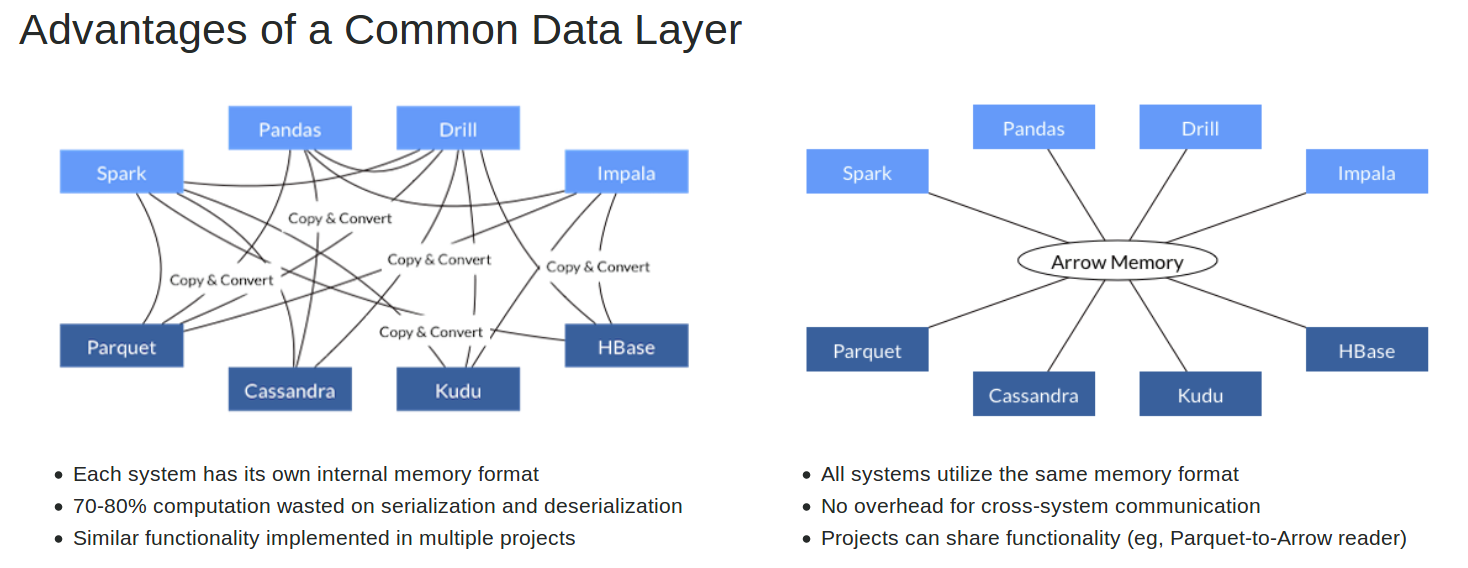Pickles
Experiments in pickling (data serialization) in Golang and Python.
Motivation
Parsing input data for machine learning is a time-intensive process.
It's a recommended practice to serialize parsed data (pickle it) so as to reduce the overhead of continually processing input data - especially for static datasets.
For a number of reasons, machine learning is normally carried out in Python. But as I was trying out Golang for machine learning it seemed like a good idea to look into pickling and whether or not it could be done in a language-agnostic way.
Python options
Basically, for Python there's pickle:
http://docs.python.org/3/library/pickle.html
There are other options but the use of pickle is pretty widespread.
If the intention is a solution that is language-agnostic, it
is probably a good idea (for compatibility reasons) to avoid
specifying protocol=pickle.HIGHEST_PROTOCOL as this may result
in the use of an unsupported format. That said, it is probably
a good idea to use the highest language-agnostic format (2 or 3)
as they seem to support more datatypes than earlier versions.
Note that the default protocol is 3 (which is a Python 3 format).
If performance is a concern (when is it not?) then there is
cPickle:
http://pymotw.com/2/pickle/
The
cPicklemodule implements the same algorithm, in C instead of Python. It is many times faster than the Python implementation, but does not allow the user to subclass from Pickle. If subclassing is not important for your use, you probably want to use cPickle.
Other options
Other options are as follows:
Golang options
There are options for storing data in Golang, listed below.
Golang-only options
For storing binary data with Golang:
http://golang.org/pkg/encoding/gob/
I would be very surprised if this format supported compression well.
It is probably possible to compress the binary data, but binary data generally does not compress well.
Pickles options
For reading & writing pickled data with Golang there is ogórek:
http://godoc.org/github.com/kisielk/og-rek
According to the docs, it is safer than reading pickled data with Python:
In particular on Go side it is thus by default safe to decode pickles from untrusted sources(^).
As ogórek supports Protocol 3 (the Python 3 variety), as well as being able to write pickles, it is probably the option of choice:
e := ogórek.NewEncoderWithConfig(w, &ogórek.EncoderConfig{
Protocol: 3,
})
err := e.Encode(obj)Of course, for reading pickled data with Golang there is also stalecucumber:
http://godoc.org/github.com/hydrogen18/stalecucumber
Note that stalecucumber only supports Python 2 pickle formats:
Protocols 0,1,2 are implemented. These are the versions written by the Python 2.x series. Python 3 defines newer protocol versions, but can write the older protocol versions so they are readable by this package.
As far as I can tell, the higher the version number, the more compression is applied. For the best compression, it is probably necessary to use Python 3. Likewise, higher versions generally feature more binary-encoded data.
There are examples on the GitHub repo:
http://github.com/hydrogen18/stalecucumber
There is a good writeup on this package here:
http://www.hydrogen18.com/blog/reading-pickled-data-in-go.html
If you are planning on using pickle this article is well worth a read
as it gives useful information on the internals of the pickle format.
Note however the following:
In the future, I plan on adding to the library the writing of pickled objects from Go.
Language-agnostic options
Google developed protobuf which supports a number of languages (among them, Python and Go):
http://developers.google.com/protocol-buffers/
They describe protobufs as:
a language-neutral, platform-neutral, extensible way of serializing structured data for use in communications protocols, data storage, and more
Check out my protobuf experiments with Python and Go repo.
Probably the best approach is to use the pickle format.
Of course, for a truly language-agnostic option, there is Apache Arrow:
[Graphic stolen from the Apache Arrow website]
For a summary of its advantages, there is this blog post from Wes McKinney:
http://wesmckinney.com/blog/pandas-and-apache-arrow/
[Wes McKinney describes himself as the creator of Pandas and Ibis, and an Apache Arrow committer]
The general consensus on Apache Arrow seems to be that it obviates the expensive serialization/de-serialization overhead found with other options.
It also enables interoperability between Python and R.
From the launch release:
A high-performance cross-system data layer for columnar in-memory analytics, Apache Arrow provides the following benefits for Big Data workloads:
- Accelerates the performance of analytical workloads by more than 100x in some cases
- Enables multi-system workloads by eliminating cross-system communication overhead
http://blogs.apache.org/foundation/entry/the_apache_software_foundation_announces87
As contrasted with other systems (from a blog post by Cloudera):
Efficient and fast data interchange between systems without the serialization costs associated with other systems like Thrift, Avro, and Protocol Buffers.
For a deep dive into Apache Arrow, this post is worth a read:
http://www.dremio.com/origin-history-of-apache-arrow/
To Do
- Investigate Golang serialization formats (gob)
- Investigate whether or not compression is a good idea (probably)
- Investigate
protobufsupport in Python (see my protobufs repo) - Investigate Apache Arrow
